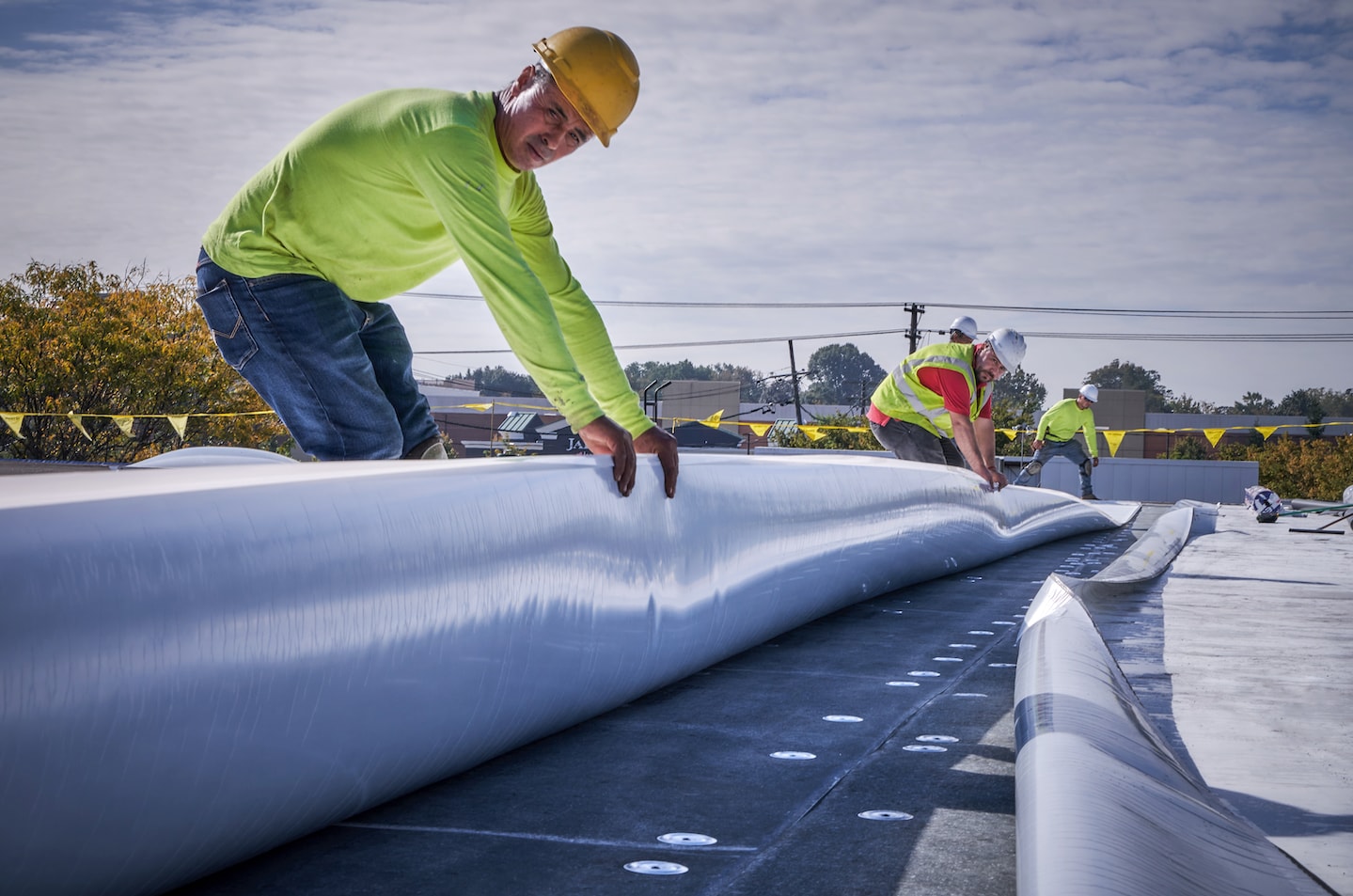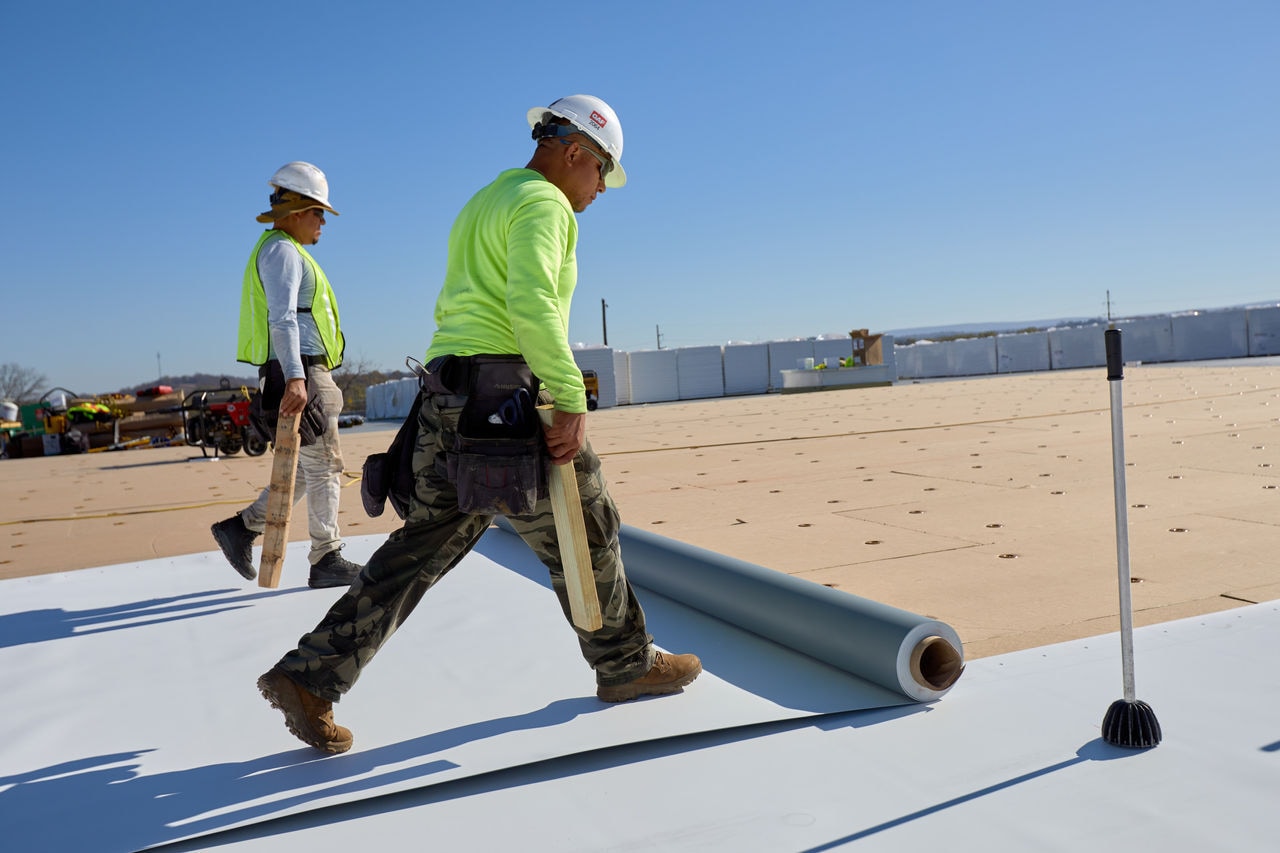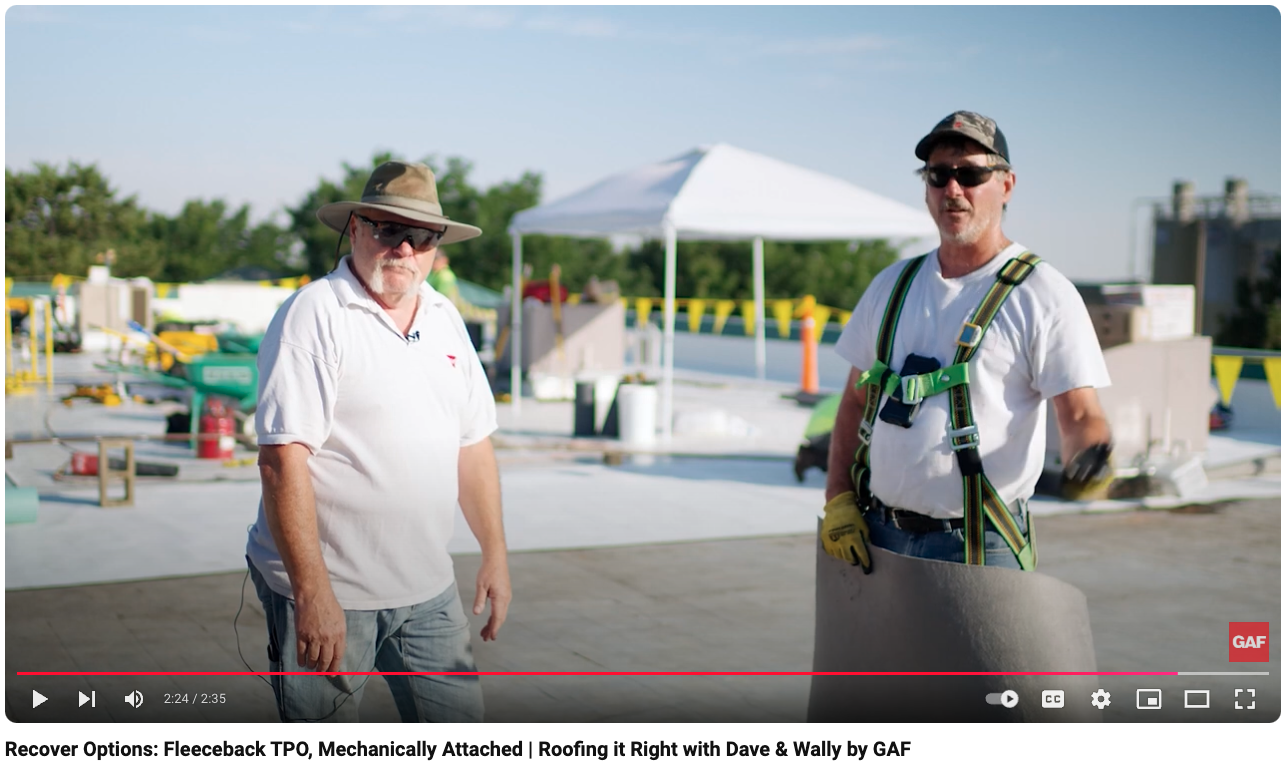You know providing customers with high-quality work begins with using top-notch materials. And while roofing systems have many crucial components, one of the most pivotal is the roofing membranes.
However, with new technologies and products continuously introduced, it can be tough to choose between all the available options.
Thermoplastic polyolefin (TPO) is a popular single-ply membrane commonly used in commercial roofing for its versatility and durability. Available in various sizes, colors, and application methods, TPO offers flexible solutions to meet diverse project needs. By understanding the differences between smooth and fleece-back TPO, along with their benefits and ideal applications, you can make an informed decision to best suit your project's unique circumstances and goals.
Smooth vs. Fleece-Back TPO Roofing Membranes
GAF EverGuard® TPO membranes provide flexibility, heat-weldable properties, and long-term heat, ultraviolet (UV), and fungal resistance1. The white, energy tan, and energy gray products also offer high reflectivity.
EverGuard® TPO Smooth Membrane and EverGuard® TPO Fleece-Back Membrane are among the most popular options. According to GAF Product Manager Mike Cukrow, both materials provide excellent protection and reflectivity. He explains that the major differences between smooth and fleece-back membranes are the installation methods, cost, and thickness.
Smooth membranes typically are less expensive and can be induction welded, mechanically attached, or applied using traditional adhesives. They also offer excellent wind uplift performance.
Fleece-back membranes, on the other hand, are either mechanically attached or installed with low-rise foam. This material also provides one more layer of protection. "Fleece-back has the addition of the fleece layer as part of the bottom part that goes on the roof itself," Cukrow notes. The fleece underlay provides a little more puncture resistance2, and it can also act as a separation layer.

When to Use Each Membrane
Fleece-back membranes can be used just about anywhere, Cukrow notes. They're ideal for reroofing projects. "It's great for going over an existing roof because you can use low-rise foam and then put it down directly over asphalt roofs," he explains.
When reroofing, you must carefully evaluate the existing roof's condition. "To do that, you would do a core cut, and you'd also check moisture," explains Cukrow. "If there's too much moisture, you may need to tear off the existing roof. But if you're able to do the reroof, that's when fleece-back is typically the right choice."
As an added benefit, you don't need a cover board or slip sheet, making this product simple and quick to install. "It's also excellent for areas prone to hail2 systems because the fleece gives the TPO additional strength, cushioning, and protection," adds Cukrow.
When it comes to ease of installation, whether to use smooth or fleece-back membranes ultimately depends on the roof you're installing. "If it's a new roof install, we're more often going to use a smooth membrane, unless, of course, puncture resistance for hail2 is a concern," Cukrow says.

Other Considerations for Choosing a Roofing Membrane
Depending on where you work, your roofing projects might need materials with enhanced UV protection, Cukrow notes. "In some instances, especially for a solar installation, contractors will often look at our Everguard Extreme TPO membrane; it has strong reflectivity, which is great for bifacial solar, and also provides a robust UV and weathering protection," he explains.
You can benefit by staying updated on the latest developments in roofing products and technology. This way, you'll always be ready for whatever your customers need, Cukrow says. GAF makes that easy by offering online training for roofing technologies, systems, and methods. In addition, the GAF CARE team provides trainings throughout the country that you can access by contacting your local salesperson or product manager or looking online.
GAF also produces helpful videos as part of its "Roofing It Right" series, including Mod-Bit Recover Project Overview, Assessing the Roof for a Recover, Recover Options: Smooth TPO with Cover Board, and Recover Options: Fleece-Back TPO, Mechanically Attached. These can help you understand the situations and conditions that best suit each option.
Fleece-Back Membranes Used on GAF World Headquarters
After 40 years in the same space, GAF moved its corporate headquarters from Wayne to Parsippany, New Jersey. Of course, its roof system includes high-quality GAF products, including its top-performing single-ply membrane, EverGuard® TPO Extreme Fleece-Back Membrane, which was installed using low-rise foam. Cukrow explains the fleece-backing made sense in this area where hailstorms are possible.
That's not the only landmark structure GAF products protect; high-quality roofing systems and materials can be found on many featured commercial roofing projects across the country2.
Curious to learn more about TPO roof membrane options and how they can support your next project? Explore this line of products on the GAF website.
1 Meets ASTM G21. GAF warranties and guarantees do not provide coverage against fungi or other biological growth. Refer to gaf.com for more information on warranty and guarantee coverage and restrictions.
2 GAF warranties and guarantees do not provide coverage against hail or other punctures except where additional puncture resistance coverage is purchased on eligible jobs. Refer to gaf.com for more information on warranty and guarantee coverage and restrictions.


